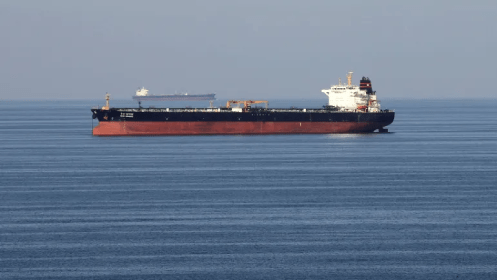- Massive Disruption to Global Oil Supply:
- Volume: Approximately 20-21 million barrels of oil per day (roughly 20-25% of global seaborne oil trade and 20% of global oil consumption) transit the strait.
- Immediate Price Spike: Oil prices would skyrocket instantly, potentially doubling or more in a very short period. Predictions often range into the $150-$200+ per barrel territory or higher.
- Global Recession: Such a massive and sudden oil price shock would almost certainly trigger a severe global recession. Energy costs underpin virtually all economic activity; skyrocketing prices would crush consumer spending, increase production costs dramatically, and stifle investment.
- Energy Security Crisis:
- Supply Shortages: Major oil importers heavily reliant on Gulf supplies (especially in Asia like China, Japan, South Korea, India, and Europe) would face immediate physical shortages.
- Strained Strategic Reserves: Countries would rapidly draw down their strategic petroleum reserves (SPRs), but these are finite and would only mitigate the crisis for a limited time (weeks or months).
- Rationing & Demand Destruction: Governments would likely implement fuel rationing and other measures to force demand destruction.
- Global Shipping & Trade Disruption:
- Higher Shipping Costs: Insurance premiums for vessels operating in the region would become astronomical. War risk premiums would spike.
- Rerouting Delays: Tankers and other cargo ships would be forced to take much longer alternative routes (e.g., around the southern tip of Africa), adding weeks to voyages, increasing freight costs significantly, and reducing global shipping capacity.
- Supply Chain Chaos: Increased costs and delays would ripple through already fragile global supply chains, impacting the delivery of all goods, not just oil.
- Geopolitical Instability & Conflict Risk:
- Military Escalation: Closure would likely be caused by conflict (e.g., involving Iran). This would provoke a massive international military response, likely led by the US and its allies (including regional partners like Saudi Arabia and the UAE), to forcibly reopen the strait. The risk of a major regional war skyrockets.
- Global Tensions: Relations between major powers (US, Europe, China, Russia) would be severely strained as they scramble to secure energy supplies and respond to the crisis.
- Impact on Gulf States: Economies of Gulf Cooperation Council (GCC) states (Saudi Arabia, UAE, Kuwait, Qatar, Bahrain, Oman) would be devastated as their primary export route is blocked, potentially causing domestic instability.
- Accelerated Energy Transition (Long-Term):
- Renewables Push: The crisis would massively accelerate investments in renewable energy, electric vehicles, and energy efficiency to reduce dependence on oil and vulnerable chokepoints.
- Diversification: Countries would redouble efforts to diversify energy sources (other suppliers, LNG, nuclear) and supply routes (new pipelines, etc.).
- Regional Environmental Risk:
- Potential for Spills/Sabotage: Conflict in the narrow, congested strait significantly increases the risk of oil spills from damaged tankers or sabotaged infrastructure (like loading terminals).
- Global Inflation & Financial Turmoil:
- Hyper-Inflation: Soaring energy costs would feed into dramatically higher prices for all goods and services, triggering widespread inflation.
- Market Crashes: Financial markets would likely experience extreme volatility and sharp declines.
Why is Closure Considered Possible (though unlikely long-term)?
- Iran’s Strategic Leverage: Iran views the strait as its primary geopolitical card. It has repeatedly threatened closure in response to severe sanctions or military attacks on its nuclear facilities or territory.
- Capability: Iran possesses significant asymmetric capabilities to harass or temporarily block shipping (mines, swarming fast attack boats, anti-ship missiles, coastal artillery, submarines). A complete, long-term blockade is harder, but even severe disruption has massive consequences.
In Summary:
The closure of the Strait of Hormuz would be an unparalleled economic and geopolitical shock. It would cause an immediate global energy crisis, trigger a deep recession, spike inflation, disrupt all global trade, massively increase shipping costs, and carry a very high risk of escalating into a major regional or even wider conflict. While perhaps not permanently sustainable for any actor, even a temporary closure would have devastating global consequences. It remains the single most significant potential flashpoint for the global oil market and economy








